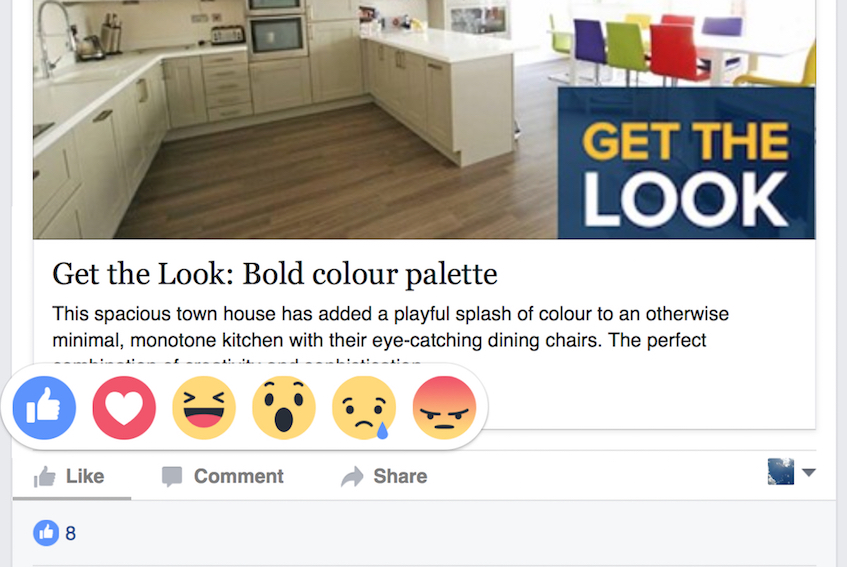Introducing the new Facebook Reactions
As you may be aware, instead of simply 'liking' a post you can now tell your friends, colleagues and family how you really feel with the new range of Reactions: 'like', 'love', 'haha', 'wow', 'sad' and 'angry'.
But you don’t just have to express these feelings towards your friends. You can also share your feelings with advertisers - the people who pay the Facebook bills!
A long time coming
Firstly, this is not a spontaneous change. There has been talk of a 'dislike' button for years - in fact, ever since the 'like' button arrived. For the past year Mark Zuckerberg & co have been conducting “global research”, which has led to the introduction of the five new Reactions buttons.
What does this mean for users?
If you’re a Facebook user this is great! You have the option to express different emotions to posts where a 'like' just isn’t the appropriate reaction. This means more satisfying and meaningful interactions with friends’ content. And by reacting in different, more expressive ways with promoted content, you can expect to see less ‘junk’ in your news feed: advertisers are likely to exclude users from future campaigns if they have expressed 'anger' to their posts.
I’m an advertiser, how does this affect me?
For advertisers, Reactions introduces a new way for people to easily express their feelings towards a sponsored post or your brand in general. So, what does this mean?
1. A better understanding of your audience
Previously, you could try to analyse a post’s engagement by looking at the number of likes and comments. Now you can get a more accurate understanding of people’s varied reactions to adverts, and use this feedback to improve and shape content strategy for future campaigns.
2. Exciting campaign opportunities
Advertisers can now be more creative than ever with campaigns, deliberately developing strategies to try and achieve a specific Reactions response - more 'wow/haha' reactions, for example. This opportunity to communicate with a greater variety of ‘textures’ means subtler, targeted campaigns that are more likely to achieve user engagement.
3. A new way of targeting
You can already target ads in a multitude of ways, whether it be age, gender, education, interests etc. Now there’s an opportunity to target users by their reactions to posts. For example, you may discover that people who 'wow' your posts are the most likely to interact with your ad or share your content. Consequently you can expect a higher ROI campaign for these targets. You could also choose to exclude users who have reacted with 'anger', for example, so they are no longer irritated by your posts.
Of course, it’s important to remember that negative emotions may be a desirable reaction to some content - 'sad' or even 'anger' in response to a social welfare story, for example. That’s what Reactions can achieve: segmented audiences, more specific objectives, better targeted messages and a range of emotional responses.
Is this the time to start Facebook advertising?
You can already see many people getting to grips with Reactions and expressing a range of feelings in their news feeds. Facebook users will gradually use the new reactions more often and more naturally as they break their 'like' habits.
With this in mind, advertisers should pay close attention to their audience's Reactions, and use the information to create cost-effective and engaging campaigns that target people with desirable emotional responses.
We recommend building your audience base now to start collecting these valuable user insights. Alongside Facebook’s existing analytical data, this will put you in a much stronger position to understand audiences, deliver valuable content and maximise the ROI from your campaigns.
Get in touch with Mark Evans to find out how the Facebook Reactions could benefit your business.
